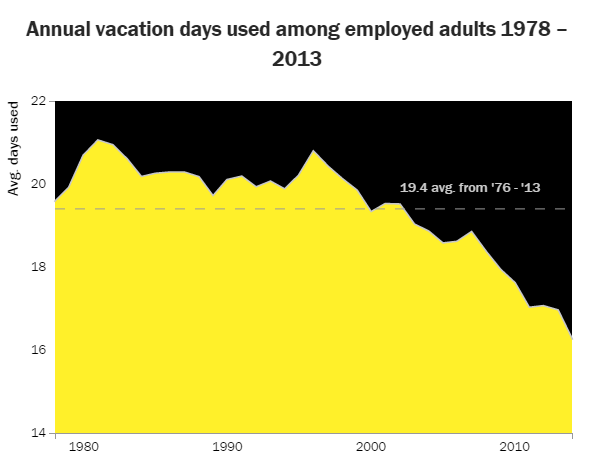
by Elizabeth Hines | Jul 15, 2015 | Blog, Leadership, Strategy, Supply Chain
 The sharing of tangible and intangible assets will increasingly become a fundamental feature of successful businesses.
The sharing of tangible and intangible assets will increasingly become a fundamental feature of successful businesses.
Few developments of late are as intriguing as the rise and disruptive impact of the collaborative economy. In a very short time, services that we may have thought of as permanent fixtures of our business and personal lives have been rendered obsolete by the sudden sharing of tangible and intangible assets in the peer-to-peer, business to consumer (B2C), and business to business (B2B) spheres.
B&B and hostels, car rental, and DVD rental are giving way to peer-to-peer accommodations, car sharing, and music and video streaming. The Marriott Hotel chain used the online platform LiquidSpace to convert empty conference rooms into rentable work spaces for guests as well as outside visitors. Walgreens teamed up with TaskRabbit, an online marketplace for outsourcing errands, to deliver products during flu season. The list is endless.
Rachel Botsman, an innovation strategist who has spent the past four years studying 500 collaborative economy startups worldwide, concludes in Harvard Business Review:
The real power of the collaborative economy is that it can serve as a zoom lens, offering a transformative perspective on the social, environmental, and economic value that can be created from any of a number of assets in ways and on a scale that did not exist before. In that transformation lie threats—and great opportunities.
While consumer sharing may have received the most media attention, Robert Vaughan, an economist at PwC Strategy & Inc., argues the open sharing of resources among businesses may present an even larger opportunity. Although, on the surface, it seems like an unlikely marriage – businesses do compete, after all – a growing number of successful collaborations prove Vaughan is right.
He writes:
In just a few years of activity, it has become clear that the unfettered exchange of otherwise unused major assets, including physical space and industrial equipment, allows a sharing company to operate more efficiently than its non-sharing rivals. Companies that go further still, wholeheartedly embracing the sharing of less tangible assets, may benefit from a different sort of change, one involving their culture, that builds new types of connections with, and sensitivity to, the world outside.
One example of an interesting collaboration involves General Electric and Quirky, an online inventor community. GE and other market giants such as IBM and Samsung file thousands of patents every year, most of which never move beyond the drawing board. The collaboration gives Quirky open access to GE’s patents, allowing for products that normally would not have been put to productive use – such as a smartphone controlled window air conditioner – to be brought to market.
Sometimes a direct collaboration may not even be necessary. A company may choose to place an undeveloped product on an online technology exchange, thereby opening itself to the possibility of building a connection to another company with complimentary expertise.
In many respects, enterprise sharing is still in its infancy and is likely to evolve just like Airbnb, whose concept seemed “fringe” when it launched in 2008 (it was initially marketed as a service for people to stay the night on their air beds in strangers’ homes). Now the company has amassed more than 650,000 rooms in 192 countries and threatens to disrupt not only the hotel industry but the entire hospitality sector.
Fronetics Strategic Advisors is a leading management consulting firm. Our firm works with companies to identify and execute strategies for growth and value creation.
Whether it is a wholesale food distributor seeking guidance on how to define and execute corporate strategy; a telematics firm needing high quality content on a consistent basis; a real estate firm looking for a marketing partner; or a supply chain firm in need of interim management, our clients rely on Fronetics to help them navigate through critical junctures, meet their toughest challenges, and take advantage of opportunities. We deliver high-impact results.
We advise and work with companies on their most critical issues and opportunities: strategy, marketing, organization, talent acquisition, performance management, and M&A support.
We have deep expertise and a proven track record in a broad range of industries including: supply chain, real estate, software, and logistics.


by Fronetics | Jul 3, 2015 | Blog, Leadership, Strategy, Talent

In 1983, the year that Chevy Chase loaded his movie family into the Griswold’s station wagon in National Lampoon’s Vacation, Americans took an average of 20 vacation days. Now, the youngest member of the Griswold family is back on the big screen in 2015, this time taking his own family on a vacation. If Americans’ recent use of paid time off is any indication, reports suggest he’ll see a more open road than his father. Plummeting to an average of 16 vacation days in 2013, the time that Americans spend away from work has fallen precipitously over the past decade. And neither workers nor employers are benefiting from this marked decline.

Source: Project Time Off, Oxford Economics, 2014
You Need a Vacation
Occasionally escaping daily routine is central to both the physical and mental health of employees, and taking time off has been proven to boost work performance and productivity. A 2011 Harvard Medical School study found that sleep deprivation costs American companies $63.2 billion a year in lost productivity. Ernst & Young conducted an internal study of its employees in 2006 and found that for each additional 10 hours of vacation employees took, their year-end performance ratings from supervisors (on a scale of one to five) improved by 8%. What’s more, retention rates were significantly higher among vacationers.
Wish You Were(n’t) Here
Given that the Center for Economic Policy and Research reports that the United States is the only advanced economy in the world that does not guarantee its employees paid time off, it’s unlikely the use of vacation days will increase without some type of policy reform. With American employers not legally required to give workers either paid vacation time or paid holidays, a high number – 77% of private sector companies offer paid time off and paid holidays as part of employee compensation packages. Not surprisingly, though, as employee wage increases, so does the likelihood that they will receive time off; half of low-wage workers typically receive paid time off whereas more than 90% of high-wage workers receive paid time off.
Unplug and Unwind
Harris Interactive reports that people like the idea of more time off. Specifically, 50% of workers who receive paid vacation time in the top 10 cities in the US say they would be willing to sacrifice a workplace benefit for more paid time off. Ironically, although employees say they want more time off, 57% don’t take off the time they already receive. Each year there are 175 million vacation days which American workers are entitled to which are not taken. Even when employees actually do use their time off, they don’t spend the time unplugged. 47% of respondents in a recent survey by Pertino reported that they feel less stressed on vacation if they can stay connected to the office. The same study found that 59% of Americans regularly work, check email, take a phone call, and do other work related tasks while on vacation. But, aside from increased productivity upon their return, employers have another incentive to encourage employees to unplug while away. The Pertino survey found that 77% of those who work on their vacation do not have access to their office network. Because of this, employees use unsanctioned or unsecured cloud services (32%) and/or bring their work computers and files with them on vacation (35%). Public Wi-Fi hotspots are commonly used by vacationers, creating an opportunity for company data and/or log-in credentials to be stolen.
While there are certainly many factors at play in the 2013 job satisfaction study published by the non-profit research group Conference Board, it’s worth noting that back in 1987, when the average American worker took 20 days of vacation, job satisfaction stood at over 61%. Now that Americans have cut back on days away from the office, job satisfaction hovers slightly above 50%. There’s no definite way to tell if Americans could move the needle of job satisfaction by loading up their cars and hitting the open road, but it’s a good start. Let’s start making vacations work for us.
Fronetics Strategic Advisors is a leading management consulting firm. Our firm works with companies to identify and execute strategies for growth and value creation.
Whether it is a wholesale food distributor seeking guidance on how to define and execute corporate strategy; a telematics firm needing high quality content on a consistent basis; a real estate firm looking for a marketing partner; or a supply chain firm in need of interim management, our clients rely on Fronetics to help them navigate through critical junctures, meet their toughest challenges, and take advantage of opportunities. We deliver high-impact results.
We advise and work with companies on their most critical issues and opportunities: strategy, marketing, organization, talent acquisition, performance management, and M&A support.
We have deep expertise and a proven track record in a broad range of industries including: supply chain, real estate, software, and logistics.


by Fronetics | Jul 2, 2015 | Blog, Leadership, Strategy
 “You’re fired!” What you need to know about firing a client
“You’re fired!” What you need to know about firing a client
In the early stages most independent contractors and businesses encounter a learning curve when it comes to client procurement and business practices. They may need to find their footing in terms of understanding their own interests and strengths. Over time they start to understand what kind of clients mesh with their expertise, interests, temperament, ethical practices, and work style.
Perhaps you’ve heard some say, “I/we don’t take on new clients.” Don’t new clients bring in more work, more connections, more money? At some point in a person’s career or a business’s lifespan, there is a shift that occurs from needing and seeking clients to needing and seeking better clients. Perhaps at some point the seeking part leaves the equation, and the contractor or company is the one being sought by clients. And, perhaps, a business doesn’t need to take on new clients because they’ve found a sweet spot with their current clients.
In order to reach this enviable equilibrium with clients, sometimes certain clients need to go. Consultant Dorie Clark, who authored the Harvard Business Review article, A Consultant’s Guide to Firing a Client, shares, “I’ve been a consultant for the past nine years, and my client list today looks dramatically different than it did when I launched, in large part because of strategic decisions I made to let some clients go and take on others.”
The thought of firing clients makes some people shudder. It can feel like a risk. In many ways it is a risk, but the payoff can be great. It’s advantageous to take stock of the clients you’re currently working with. Are there clients who are temperamental or disrespectful, who drain time or money from your business, who require skills or services you’re not interested in providing, who aren’t willing to pay what you’re worth, who you’ve been working with as a favor (such as legacy clients)? In order to make room for new clients, who align with your skills and practices and pay what you’re worth, some old clients may need to go. In order to lighten your load, if you’re looking to become more lean, selective, or focused, some old clients may need to go.
Another anxiety around letting clients go is the conflict that could arise. The best way to fire a client is to do it in a respectful manner, remembering that your integrity and reputation are both on the line. Even if you’re dealing with an abusive client, take the high road. The Forbes article Four Reasons to Fire a Client also encourages this approach, “Remember to remain neutral, avoiding accusation, and whenever possible give your customer a referral to another provider.”
Here are 5 tips for successful culling of clients:
1. Do it in writing. Cover potential legal encounters. This is especially useful when citing the client’s breach of contract or working with a disrespectful or petulant client.
2. Be formal. Even if your relationship has felt informal at times, use professional language.
3. Be concise and clear. There is no reason to bring emotions into the mix and no reason to be ambiguous. Briefly state why the termination is occurring and when it will take place (e.g. on X date, by the end of the contract, immediately, etc.) This should be an air-tight document.
4. Be grateful. There’s no need to gush, but even if the relationship has been challenging, express an understanding that clients are the backbone of a business. A simple line like, “we’ve appreciated the opportunity to work with you…” will secure your integrity. After all, it’s not a lie. Most likely you did appreciate the opportunity, but opportunity and experience are two different things.
5. Be helpful. Don’t leave a client stranded. As previously mentioned, if possible, refer your client to another business. This leaves you in good standing with the client and also fosters connections with other businesses.
At the end of the day, how you handle firing a client could impact the relationships with current and potential clients, as well as your own employees. In a society in which transparency and information are demanded and more available, you want to be sure to end this relationship respectfully. Don’t be the one people are gossiping about, be the one people want to work with.
Fronetics Strategic Advisors is a leading management consulting firm. Our firm works with companies to identify and execute strategies for growth and value creation.
Whether it is a wholesale food distributor seeking guidance on how to define and execute corporate strategy; a telematics firm needing high quality content on a consistent basis; a real estate firm looking for a marketing partner; or a supply chain firm in need of interim management, our clients rely on Fronetics to help them navigate through critical junctures, meet their toughest challenges, and take advantage of opportunities. We deliver high-impact results.
We advise and work with companies on their most critical issues and opportunities: strategy, marketing, organization, talent acquisition, performance management, and M&A support.
We have deep expertise and a proven track record in a broad range of industries including: supply chain, real estate, software, and logistics.


by Fronetics | Jul 1, 2015 | Blog, Leadership, Strategy
 How to increase prices and retain customers
How to increase prices and retain customers
Companies raise prices all the time. There are various reasons, explanations, and results. Sometimes companies disclose the changes, but sometimes customers and clients never even catch wind of a change. Let’s have a look at the causes, the perception, and the actions to take.
Why?
Usually there’s an impetus for a company to raise prices. Perhaps there’s a business model already in place to raise future prices, but often a price increase is tied to another event. Here are some typical reasons:
Spike in raw material prices used in manufacturing products
Is there dearth of raw materials used to make the products your company is producing? Perhaps there’s a lack of access to the materials due to stalled transportation from inclement weather, natural disaster, drought, etc. Perhaps resources are dwindling or other roadblocks in the supply chain are driving up prices.
Services or products have become incredibly popular (value-based pricing)
Perhaps you realize that your services or products weren’t appropriately priced early on, and you’re realizing your product’s value in the market. You may also need to reduce demand for some time by increasing prices.
Unexpected change in business or a new tact
Perhaps you’ve lost business recently or your business strategy has changed and you need to cover costs by increasing prices. These changes can come with the opening of a new branch or factory, or the launch of new services or products.
Inflation and market trends
It would be nice to keep prices where they started 5, 10, or 20 years ago, but most businesses aren’t sustainable that way. As all prices of other goods and services rise, so too must yours.
Perception
As detailed in an article about the power or perception, behavioral economist Richard Thaler ran an experiment in which some study members were asked how much money they would give a friend to go buy beer at a “run-down grocery store”. Some study members were asked to get the alcohol at a “fancy hotel”. According to the article, “the fancy resort’s median price was 71% higher than the run-down store’s price.”
This might suggest that considering the perception of your product or services could be key to your next price adjustment. Considering what your current branding is, who your competitors are, and where you want to see your company could help shift your own perception of your company, and that of others. Aligning the two could be critical to successfully stewarding a price shift.
How?
It’s important thoroughly think through a price adjustment. Considering your own worth is important, but understanding that some clients and customers won’t be convinced can be a hard pill to swallow. To make the change more palatable, or even attractive, you should consider these options:
Consider the tactic (good-value pricing, value-added pricing)
Are you planning on going to offer any promotions or price discounts in the future? Are you going to attach value-added features and services to support the higher prices? Are you considering doing bundles packages? It’s important to answer theses questions so that you can communicate to clients and customers.
Consider timing
Have you recently increased prices? Does it feel too soon to do it again? You could risk loyalty from consumers and clients if price increases come back to back. However some believe that small increases frequently are better than large increases infrequently.
Are you implementing new, improved services or bundling new packages? An announcement tied to value increase or product change can be more comfortable for consumers and clients.
Make a solid announcement
Most people feel it is best to announce an increase, especially to current customers and channel partners, rather than try to hide the increase. People don’t want to feel fooled or ignored. They want transparency.
Understand that wording is critical
Being direct and confident in expressing the increase is the best tact. Remember that if you value your product and services, your customers and clients are more likely to as well.
Although you’re briefly sharing the reason for the increase, don’t feel the need to disclose sensitive financial information.
Lastly, provide clear timing on the changes and be sure that changes don’t violate any pre-existing agreements.
Although some customers and clients may bristle at an increase of prices, if you’ve been playing fairly and providing solid products and services, many loyal customers will come along for the ride. If you value yourself, and others value you, you can survive a price increase. You may even thrive from one.
Fronetics Strategic Advisors is a leading management consulting firm. Our firm works with companies to identify and execute strategies for growth and value creation.
Whether it is a wholesale food distributor seeking guidance on how to define and execute corporate strategy; a telematics firm needing high quality content on a consistent basis; a real estate firm looking for a marketing partner; or a supply chain firm in need of interim management, our clients rely on Fronetics to help them navigate through critical junctures, meet their toughest challenges, and take advantage of opportunities. We deliver high-impact results.
We advise and work with companies on their most critical issues and opportunities: strategy, marketing, organization, talent acquisition, performance management, and M&A support.
We have deep expertise and a proven track record in a broad range of industries including: supply chain, real estate, software, and logistics.


by Fronetics | Jun 2, 2015 | Blog, Leadership, Strategy, Supply Chain, Talent

On average, men make more than women. Here’s why we need to change this and close the wage gap.
On average, men make more money than women. This is what we call the wage gap— the financial divide between the sexes. This is a complex issue, not one that has an easy explanation, but one that is deeply rooted in history, tradition, and culture. In a field that has been dominated by men, it is no surprise that women generally paid less than men in the supply chain.
We assume women have equal rights, given the number of anti-discrimination acts that have been passed, and protection from the Civil Rights Act of 1964 which outlawed discrimination based on sex, national origin, color, race, and religion. However, somehow women are still paid less, and almost 95 years after the Equal Rights Act amendment to the constitution was introduced, and 45 years since the amendment was passed by Congress, it has still not been ratified by the necessary number of states.
Women occupy just 15% of editorial pages, corporate boards, and congressional seats, according to the OpEd Project. The US ranks 20th overall out of 142 countries in the 2014 World Economic Report Global Gender Gap Report which examines and ranks a country’s level of equality based on health, education, earning potential, and political empowerment. Breaking the data down even more, it was found that the US was ranked 65th in wage equality out of 142 countries studied. Given its status as a leading world power, and that women are gaining great strides in education, what do these rankings mean for the United States?
The complexity of the wage gap
The wage gap is complex. It’s not simply a matter of blatant discrimination. Some argue that the pay gap is not a gender gap but a motherhood gap. Women tend to work part-time more than men due to demands at home, and part-time workers get paid less on average. Because women are often tied to domestic responsibility (ranging from cleaning, cooking and childcare) they work fewer hours than men, on average. They take more breaks from continuous employment and therefore may have decreased opportunities to get promotions, and climb the ladder. According to the Wall Street Journal, “today, childless 20-something women do earn more than their male peers. But most are likely to cut back their hours after they have kids, giving men the hours, and income, advantage.”
According to Kevin O’Marah, chief content officer at SCM World, there are two factors deterring women from rising through the supply chain ranks: first is the intermittent work history some women have due to family care, “Every day is a chance to have a disaster. It’s very high pressure. Stepping out for even a couple of months makes it very hard to get back in.” Second, O’Marah points to information that shows that men apply for jobs they’re not fully qualified for, whereas women only apply for jobs for which they feel they are 100% qualified. According to O’Marah, “Men are typically promoted on potential they exhibit, whereas women are promoted on results. Men jump at opportunities, even if they don’t have the qualifications; women have a tendency to say: ‘I’m not ready for that’.” Could the “feminization of higher education” be the confidence builder and, eventually, the equalizer women need in the future?
Women are excelling in education in the US, not only in terms of enrollment numbers, but also in terms of grades. Females spend more time studying and typically get better grades, however it has been found that the return on investment on a college degree for women was lower than, or the same as, for men. According to The Economist, “Although women as a group are now better qualified, they earn about three-quarters as much as men. A big reason is the choice of subject: education, the humanities and social work pay less than engineering or computer science. But academic research shows that women attach less importance than men to the graduate pay premium, suggesting that a high financial return is not the main reason for their further education.”
Addressing the gap
We know there’s a pay gap. Why should we help lessen it, and how do we do it?
Understanding that equal pay for women is a benefit for everyone, not simply for women, is key. According to the Shriver Report, one third of American women live in poverty. This puts a strain on an entire family, and on our social support systems. If women are given the education, support, and opportunities to work we can help alleviate poverty, stimulate economic growth, strengthen the middle class, and secure our place as a leading country.
Colleges and universities can continue to recruit and encourage women to apply, matriculate, and graduate from business programs. Harvard’s Peek Program is encouraging women to get a taste of what an MBA is like as a means of encouraging growth in their program, which is currently 41% female. In 2014, for the first time, females made up more than half of Rutger’s MBA students. There are many degree and diploma programs in Logistics and Supply Chain Management cropping up across the country. Encouraging young women to pursue this interesting and lucrative field is critical. Assuming that women should be funneled into typically “female” occupations is perpetuating the assumptions, prejudice, and micro-aggressions we often find in discrimination.
In an article on closing the gender gap in the supply chain, Will Green writes of a future in which, “’forward-thinking firms’ will team up with schools to encourage girls to study science and engineering, while successful women in these jobs will act as role models.” These firms will allow for an environment that is friendly to work-life balance for women and men, permitting women to rise through the ranks, also allowing men to take more of a role in domestic life. These things combined may help to achieve a sense of equality for women in the workplace.
It will benefit everyone if we can remember that we all have a role and a stake in the health and growth of the supply chain, whether we are leaders, employers, employees, consumers, male, or female. Our ranking, our integrity, our success, and our future as a country depend on it.

by Fronetics | Jun 2, 2015 | Blog, Leadership, Strategy, Supply Chain, Talent

On average, men make more than women. Here’s why we need to change this and close the wage gap.
On average, men make more money than women. This is what we call the wage gap— the financial divide between the sexes. This is a complex issue, not one that has an easy explanation, but one that is deeply rooted in history, tradition, and culture. In a field that has been dominated by men, it is no surprise that women generally paid less than men in the supply chain.
We assume women have equal rights, given the number of anti-discrimination acts that have been passed, and protection from the Civil Rights Act of 1964 which outlawed discrimination based on sex, national origin, color, race, and religion. However, somehow women are still paid less, and almost 95 years after the Equal Rights Act amendment to the constitution was introduced, and 45 years since the amendment was passed by Congress, it has still not been ratified by the necessary number of states.
Women occupy just 15% of editorial pages, corporate boards, and congressional seats, according to the OpEd Project. The US ranks 20th overall out of 142 countries in the 2014 World Economic Report Global Gender Gap Report which examines and ranks a country’s level of equality based on health, education, earning potential, and political empowerment. Breaking the data down even more, it was found that the US was ranked 65th in wage equality out of 142 countries studied. Given its status as a leading world power, and that women are gaining great strides in education, what do these rankings mean for the United States?
The complexity of the wage gap
The wage gap is complex. It’s not simply a matter of blatant discrimination. Some argue that the pay gap is not a gender gap but a motherhood gap. Women tend to work part-time more than men due to demands at home, and part-time workers get paid less on average. Because women are often tied to domestic responsibility (ranging from cleaning, cooking and childcare) they work fewer hours than men, on average. They take more breaks from continuous employment and therefore may have decreased opportunities to get promotions, and climb the ladder. According to the Wall Street Journal, “today, childless 20-something women do earn more than their male peers. But most are likely to cut back their hours after they have kids, giving men the hours, and income, advantage.”
According to Kevin O’Marah, chief content officer at SCM World, there are two factors deterring women from rising through the supply chain ranks: first is the intermittent work history some women have due to family care, “Every day is a chance to have a disaster. It’s very high pressure. Stepping out for even a couple of months makes it very hard to get back in.” Second, O’Marah points to information that shows that men apply for jobs they’re not fully qualified for, whereas women only apply for jobs for which they feel they are 100% qualified. According to O’Marah, “Men are typically promoted on potential they exhibit, whereas women are promoted on results. Men jump at opportunities, even if they don’t have the qualifications; women have a tendency to say: ‘I’m not ready for that’.” Could the “feminization of higher education” be the confidence builder and, eventually, the equalizer women need in the future?
Women are excelling in education in the US, not only in terms of enrollment numbers, but also in terms of grades. Females spend more time studying and typically get better grades, however it has been found that the return on investment on a college degree for women was lower than, or the same as, for men. According to The Economist, “Although women as a group are now better qualified, they earn about three-quarters as much as men. A big reason is the choice of subject: education, the humanities and social work pay less than engineering or computer science. But academic research shows that women attach less importance than men to the graduate pay premium, suggesting that a high financial return is not the main reason for their further education.”
Addressing the gap
We know there’s a pay gap. Why should we help lessen it, and how do we do it?
Understanding that equal pay for women is a benefit for everyone, not simply for women, is key. According to the Shriver Report, one third of American women live in poverty. This puts a strain on an entire family, and on our social support systems. If women are given the education, support, and opportunities to work we can help alleviate poverty, stimulate economic growth, strengthen the middle class, and secure our place as a leading country.
Colleges and universities can continue to recruit and encourage women to apply, matriculate, and graduate from business programs. Harvard’s Peek Program is encouraging women to get a taste of what an MBA is like as a means of encouraging growth in their program, which is currently 41% female. In 2014, for the first time, females made up more than half of Rutger’s MBA students. There are many degree and diploma programs in Logistics and Supply Chain Management cropping up across the country. Encouraging young women to pursue this interesting and lucrative field is critical. Assuming that women should be funneled into typically “female” occupations is perpetuating the assumptions, prejudice, and micro-aggressions we often find in discrimination.
In an article on closing the gender gap in the supply chain, Will Green writes of a future in which, “’forward-thinking firms’ will team up with schools to encourage girls to study science and engineering, while successful women in these jobs will act as role models.” These firms will allow for an environment that is friendly to work-life balance for women and men, permitting women to rise through the ranks, also allowing men to take more of a role in domestic life. These things combined may help to achieve a sense of equality for women in the workplace.
It will benefit everyone if we can remember that we all have a role and a stake in the health and growth of the supply chain, whether we are leaders, employers, employees, consumers, male, or female. Our ranking, our integrity, our success, and our future as a country depend on it.

 The sharing of tangible and intangible assets will increasingly become a fundamental feature of successful businesses.
The sharing of tangible and intangible assets will increasingly become a fundamental feature of successful businesses.





